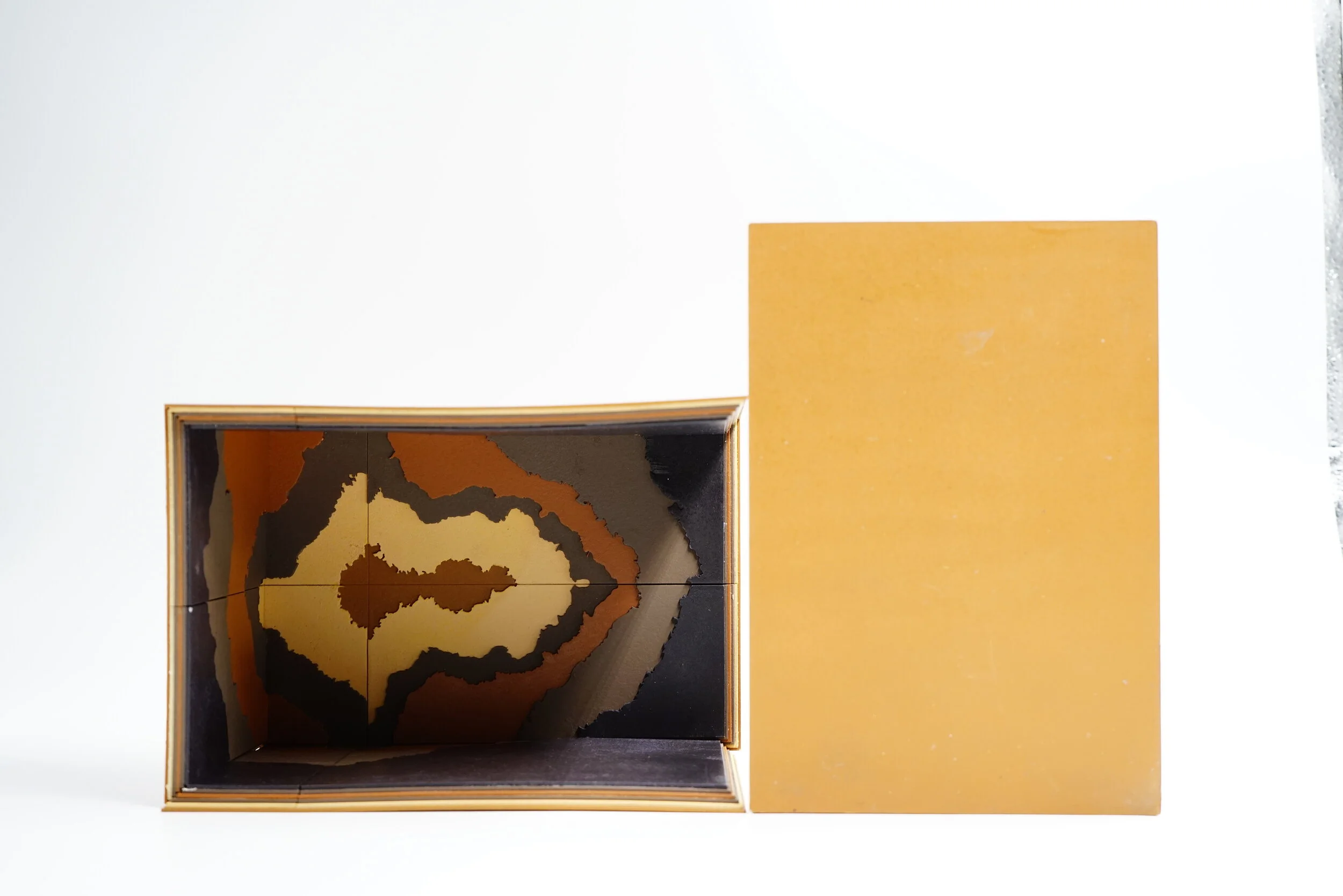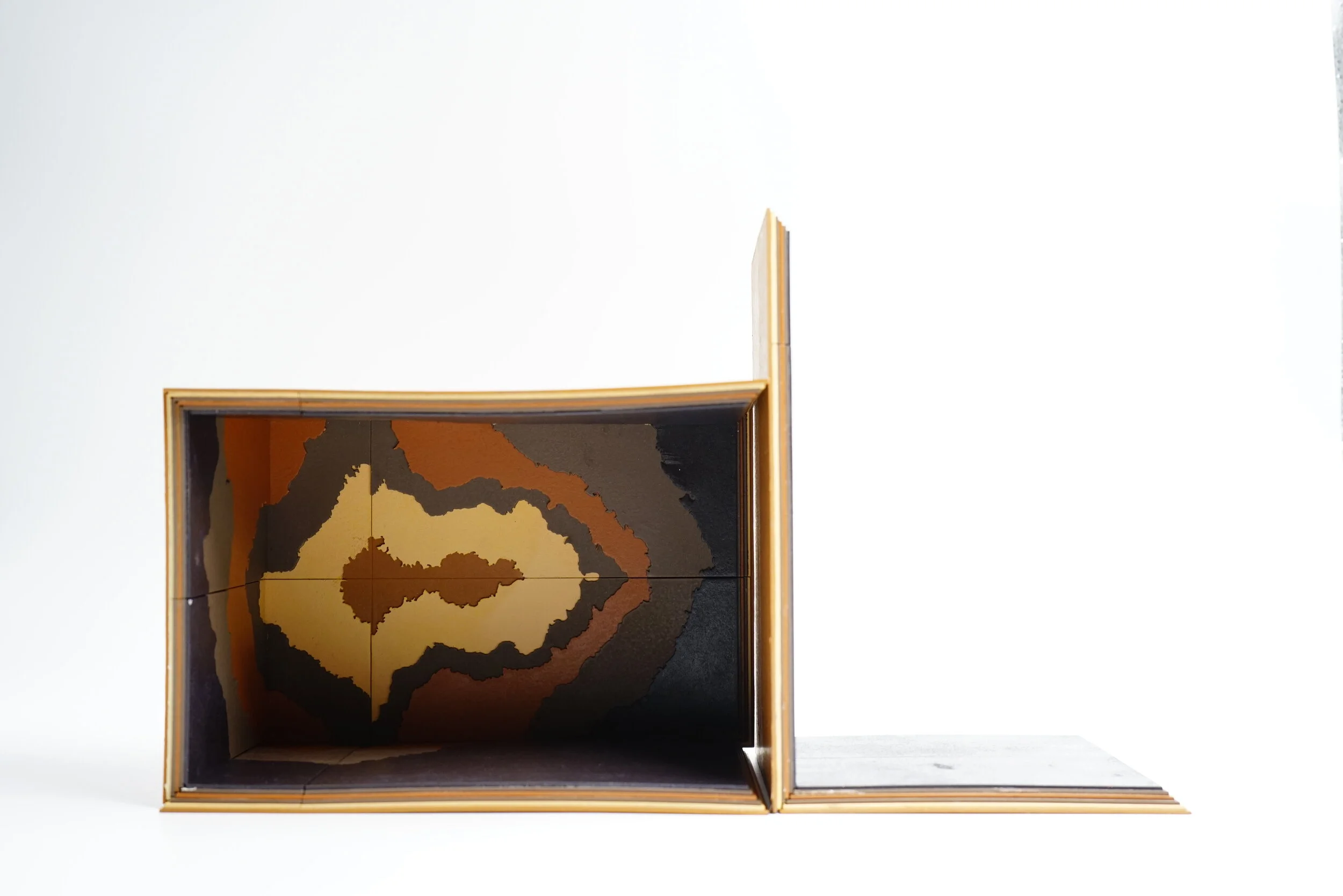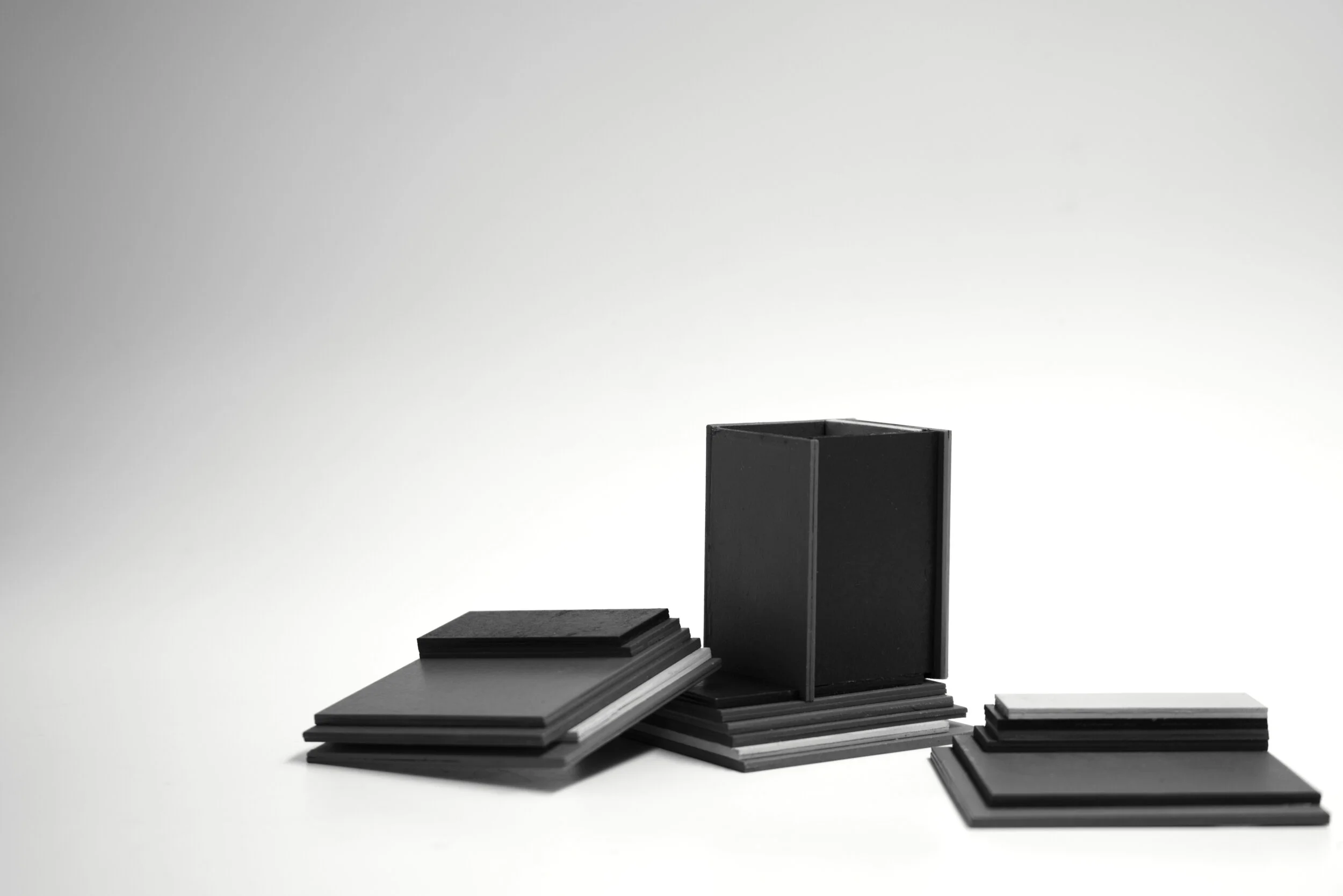

THE BOX
Starting with a box, we were to alter it to create a niche. The aim was to come up with a rule-set behind the transformation of the box, which doesn’t add or remove matter from the box. My take on this was to create an illusion utilising parallel views around the box. Only certain folds could be made, increasing the box’s thickness on certain faces. The resultant box is then used as a theatre.




Embedding Materiality
The second assignment involved choosing a Precedent Material to sample, and extract new rule-sets from in order to fuse them with the rule-sets of the box.
The material chosen here is the Onyx, from Mies van der Rohe’s Barcelona Pavilion. The onyx is read in terms of it's natural properties; consisting layers of different compounds.




Introducing Control
The box utilised the material perfectly. The layers of onyx adapted to the orthagonal nature of the box. The question now was how to steer away from it’s laminar nature and let the layers fold around; trade places. This resulted in vacancies within the layers. Could that space be used for program?





GHETTO FILM SCHOOL
Combining two theatres using a common conceptual envelope system.
In collaboration with Anahita Bhrambhatt.
Taped.
The material we decided to use as an envelope to bind the two boxes together was tape. We started wrapping tape around a massing model, until it had a certain amount of layers to create thickness. This hilarious concept turned into the tape becoming thick enough to then inhabit program.


THE THEATRE
The walls now become the stairs.
Revealing how the layers moved was a crucial factor. The challenge was how one could reveal the layers by not simply carving into them, but utilising them functionally at the same time.



